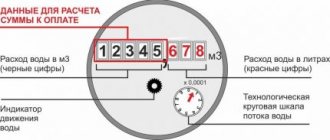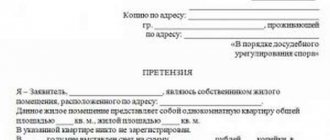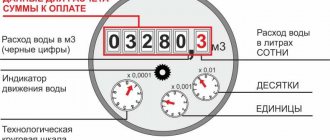It is necessary to transmit the data of an individual meter within a certain period of time. This ensures payment is calculated according to current tariffs. But in order to avoid discrepancies and errors, you need to correctly take the electricity meter readings. In fact, there is nothing complicated here, although not everyone knows where to look and which button to press to rewrite the necessary information.
How to take readings
Depending on the model of the electricity meter, different methods for obtaining information are used.
Old meters
Mechanical induction devices have been popular for quite some time. At the moment, they are gradually giving way to electronic IPUs, which provide better control of electricity consumption. Although the demand for classic meters is gradually decreasing, they are still found in private houses and apartments.
The device is single-tariff (single-phase), so there is no need to perform complex calculations to take readings. It is recommended to select a conditional day of each month for writing off data from the electric meter, preceding or included in the period for submitting information.
The procedure is quite simple:
- A standard mechanical apparatus has a dial with 5–7 digits, and as it works, the numbers change from 0 to 9. After one department has completed a full revolution, the next one begins. The dial is divided into two halves: the left one shows how many kW/h have been consumed since connection, the second (red) is separated by a comma and indicates tenths (hundredths) of a kilowatt.
- It is necessary to write off the main part of the characters 000024.8 (seven-digit order). The basis is 000024 kW/hour.
- Depending on the requirements of the management company or resource supplying organization, the information received must be submitted without changes or the difference between the current and previous values must be independently calculated. So, if over the past month the readings were 000003, then: 000024–000003=21 kW/h.
In both old and new mechanical electricity meters, the numbers that are not taken into account in the calculations are clearly highlighted at the end of the number row
The process may be difficult due to the counter resetting to zero after reaching the maximum value. In such a situation, you must first write down the old data. For example, for May (conditionally) it was 999969 (without a decimal point), the new information is 000003 (1 is substituted at the beginning, the result is 1,000003).
1 000003–999969=34 kW/h (current readings).
It is necessary to understand that any illegal attempts to change information about electricity consumption will lead to serious trouble.
On a note! There are mechanisms in which there is no division into main and auxiliary numbers. In such a situation, you need to read and enter all available numbers into the receipt.
New counters
Modern single- and three-phase metering devices differ significantly from mechanical ones. The main difference is that IPUs are equipped with an electronic dial and can be multi-tariff, which provides significant savings in energy consumption. To correctly determine the readings, you need to understand the available devices.
The following varieties are distinguished:
- single tariff, the readings of which are not divided into zones;
- two-tariff – T1/T2;
- three-tariff – T1/T2/T3.
Data is collected from such devices as follows:
- You need to press a button on the mechanism body. It can be called differently, depending on the IPU model, most often - “PRSM”, “Input” or “Frame”.
- After pressing, the required values sequentially appear, which have the corresponding signatures - T1, T2 or T3.
- The main current indicators of 5–6 digits to the decimal point are written off one by one, depending on the type of counter.
- On an electronic display, the characters are separated by a noticeable comma, and in some IPUs the hundredths and tenths are significantly smaller.
- The information is transmitted directly to the management company or supplying organization or calculated independently.
In electric meters with an electronic display, after pressing the control key, the data is displayed on the screen: the number of kilowatt-hours consumed and the tariff number (indicated in the upper left corner)
Explanation of symbols for various electronic devices:
- Single tariff. Reflect the total resource consumption without division.
- Two-tariff. T1 – day zone (from 7 am to 11 pm), T2 – night period (from 23.00 to 7.00).
- Three-tariff. T1 – peak zone, which has two time periods: from 7.00 to 10.00 and 17.00 to 21.00; T2 – night (from 23.00 to 7.00); T3 – half-peak zone (from 10.00 to 17.00 and from 21.00 to 23.00). Time periods may vary by region.
The multi-tariff IPU must be correctly connected and pre-configured so that it records readings exactly for the allotted period. In some situations, this may require agreement with the utility provider.
Before purchasing and connecting multi-tariff meters, you should consult your energy supply company about the possibility of using them in your region
What parts make up the tariff for the population?
Regardless of the type, the tariff for the population consists of four parts (Article 10, Section III of the Appendix to Order of the FTS of the Russian Federation No. 20-e/2). The structure is dictated by the resource supply process: electricity is a) produced, b) bought and sold, c) delivered to the end consumer, d) the whole process is regulated by infrastructure organizations.
Let's talk about each component of the tariff in more detail:
1. The cost of producing the resource.
The tariff includes the cost of a kilowatt-hour of electricity from the manufacturer (hydroelectric power station, state district power station, thermal power plant, etc.), which sells it on the wholesale market at free prices.
2. Price of electricity transmission services.
Electricity is delivered from manufacturing companies to the end consumer by network organizations. They, by right of ownership or on other legal grounds, own power grid facilities: power lines, transformer substations, distribution points, etc. (Article 3, Chapter 1 of the Federal Law of March 26, 2003 No. 35-FZ “On Electric Power Industry”).
3. Sales premium (about 5% of the total cost of 1 kWh).
Sales companies buy electricity from producers and then sell it to end consumers under energy supply contracts. Therefore, the tariff includes a sales allowance - funds that are necessary for the sales company (RSC) to operate: pay wages, create a material and technical base, maintain service offices, etc.
The size of the sales allowance is determined by the executive authority based on the calculation of economically justified expenses provided by sales companies (Section IV of the Appendix to Order No. 20-e/2 of the Federal Tariff Service of the Russian Federation).
4. Infrastructure payments (about 1% of the total cost of 1 kWh).
This is the cost of services of organizations responsible for managing the Unified Energy System of Russia and regulating the electricity market: JSC Center for Financial Settlements, JSC Trading System Administrator and JSC System Operator of the Unified Energy System, etc.
Components of the cost of 1 kWh at a price of 2.26 rubles/kWh:
Procedure for paying for electricity: is it legal to demand an advance?
1070700
How to calculate electricity using a meter
To eliminate errors, it is necessary to carry out the calculation correctly.
Where to find tariff information
To independently determine the amount of electricity payment for the current period, you need to know exactly the cost of the service. Depending on the region of the Russian Federation, as well as additional parameters (type of settlement, availability of certain electrical appliances and rates at different times of the day), the tariff for the population may differ significantly.
You can find out the cost for a specific territory as follows:
- Check on the website or at the office of the utility service provider. The data must be indicated on stands in specialized payment centers.
- When tariffs increase, information is published in the official press and on the website of the regional commission that deals with this issue. The department’s website also has an online calculator that roughly calculates the fee for a specified time period.
- Look on the receipt. During the period when tariffs increase, some discrepancies are possible.
Attention! It is not recommended to use unofficial sources of information, as they may contain unverified or outdated information.
Calculation
It is not difficult to calculate the payment for consumed electricity; to do this, you need to follow a certain scheme, depending on the type of device.
Single tariff electricity meter
Conventionally, the current readings are 000354, for the last month – 000296.
The tariff for Moscow residents who live in gasified houses that do not fall under the territory equated to rural areas for the second half of 2021 is 5.38 rubles. per kW/h.
Based on the available values, the calculation of the expense and payment amount for the current month will be as follows:
354–296=58 kW/h x 5.38 rub. = 312.04 rub.
Two-tariff IPU
Electric meter readings for the new billing period: T1 – 000898, T2 – 000576. Previous values: T1 – 000840, T2 – 000539.
The tariff for the peak zone in Moscow (in houses with gas stoves) is 6.19 rubles, for the night period - 1.92 rubles.
You need to determine consumption and payment in stages; first you need to calculate current consumption:
T1. 898–840=58 kW/h x 6.19=359.02 rub.
T2. 576–539=37 kW/h x 1.92=71.04 rub.
Total for the month: 359.02+71.04=430.06 rub.
Three-tariff electricity meter
It is necessary to take readings from three zones: T1 – 000587, T2 – 000456, T3 – 000832. Data for the past month: T1 – 000545, T2 – 000415, T3 – 000780.
Tariffs by time: peak zone – 6.46 rubles; night – 1.92 rubles; half peak – 5.38 rub.
To find out how much you need to pay per month, you need to count your expenses sequentially.
T1: 587–545=32 kW/h x 6.46=206.72 rub.
T2: 456–415 = 41 kW/h x 1.92 = 78.72 rub.
T3: 832–780 = 53 kW/h x 5.38 = 285.14 rub.
Next you need to add up all the data:
206.72+78.72+285.14=570.58 rub.
This is the amount you need to pay for light.
It is taken into account that the final figures in the receipt may differ slightly: you need to pay attention to the “ONE” line, which reflects the general readings for the house and is included in the payment.
Who sets tariffs for the population
The amount of electricity consumed is measured in kilowatt-hours or kWh. One kWh is the amount of energy consumed by a one-kilowatt (1000 W) device in one hour. For example, a boiler with a power of 3500 W (3.5 kW) consumes 3.5 kW*h per hour of operation, and 7 kW*h in two hours.
The cost of 1 kilowatt-hour is called a tariff. It is formed in accordance with the “Methodological guidelines for calculating regulated tariffs and prices for electric (heat) energy in the retail (consumer) market”, approved by order of the Federal Tariff Service of the Russian Federation dated August 6, 2004 No. 20-e/2.
The price of 1 kWh for an individual resource consumer depends on the tariff group to which it belongs. According to clause 1.1 of Order No. 303-e of the Federal Tariff Service of the Russian Federation dated June 24, 2011, owners of residential premises in apartment buildings and providers of utility services are included in the group “population and equivalent categories” (tariff for the population).
Consumers in this group spend electrical energy for household needs, and not to make a profit. Based on the price of a kilowatt-hour for the population, the payment for the resource consumed for the maintenance of the common property of the owners of apartment buildings is also calculated.
Some non-residential premises also belong to the “population” group - these are premises of a domestic nature, for example, private garages, bathhouses, sheds and cellars. It does not matter who the owner of the non-residential premises is - an individual or a legal entity.
Non-residential premises that are used for commercial purposes (pharmacies, offices, shops, salons, etc.) are included in the tariff group “other consumers” (Article 27, Section VI of the Appendix to Order No. 20-e/2 of the Federal Tariff Service of the Russian Federation). Prices for “other consumers” differ markedly from the cost of a kilowatt-hour for the population.
Tariffs for the population, according to Art. Section 2 I Appendix to the order of the FTS of the Russian Federation No. 20-e/2, establishes the local executive authority in the field of state regulation of tariffs. For example, the Committee on Prices and Tariffs or the Regional Energy Commission. When determining the cost of a kilowatt-hour for the next calendar year, the tariff commission cannot go beyond the range established for each region by the Federal Antimonopoly Service of the Russian Federation.
Grounds for early revision of utility tariffs
142280
Retrieving information and calculations for different models
Although the operating principle of modern IPUs is almost identical, depending on the variety there may be some differences:
- "Mercury 200". The “Enter” button is pressed, after which the time, date, readings by zone and total flow appear. The letter designation of the tariff is in the upper left corner. According to the described calculation example for a specific territory, the total payment amount is calculated.
- "Energymera". The most common are two- and multi-tariff modifications. Readings from this meter are taken according to a scheme similar to the previous option. The main difference is that you need to press the "PRSM" button.
- "Micron". It is not difficult to take readings from such a meter, provided that certain nuances are observed. At the bottom left side of the case there is a button, when pressed, the necessary information is displayed. A special feature of the device is that the designations of tariff zones T1, T2 or T3 do not appear; they are already signed at the bottom of the screen and highlighted with a tick. The payment amount is calculated according to the standard scheme.
- Saivan. The most economical option that is popular. It differs from others in the absence of a button that highlights specific values and shows data sequentially with a small interval. The necessary parameters are recorded and checked, for which it is necessary to let the counter go around in a circle. The calculation depends on the modification of the electricity meter and the current tariff.
Advice! To eliminate errors when taking readings, you must first familiarize yourself with the product data sheet, which contains the correct algorithm of actions.
When choosing an electric meter, it is advisable to give preference to domestic models or meters manufactured in the CIS, since imported options may not be adapted to our networks
How the electricity market works in Russia
Many will find the question about the structure of the electricity market quite strange, because everyone knows: you consume electricity, next month you receive a receipt and all you have to do is go to the online service/bank, pay the receipt and the electricity purchase and sale transaction is completed.
However, the entire complexity of the process is hidden from ordinary consumers. In reality, everything is somewhat more complicated. There is a wholesale market for electricity and capacity, and there are generating and network companies. The latter are federal and regional; after all, there are sales organizations known to everyone. Let's try to figure out how the electricity market works in Russia.
How electricity is produced
Electricity in our sockets and enterprises is “born”, as a rule, at a fairly large distance from places of consumption, at generating plants of electric power companies. There are several ways to obtain electrical energy, we list the main ones:
1. Non-renewable energy . Burning fossil fuels, mainly coal, petroleum products or gas.
2. Renewable energy . Hydrogeneration, wind and solar installations, etc.
3. Nuclear energy (NPP).
In Russia, gas-fueled power plants predominate (about 50%). A significant portion consists of nuclear power plants (about 16%) and hydroelectric generation (about 18%). Coal accounts for about 15%. The share of electricity produced from oil and renewable sources is very small.
Generators in Russia
There are many companies producing electricity in Russia. For example, even the oil company Lukoil has generating structures in the group, which in total provide a capacity of about 5.7 GW. Some of the generating companies are not listed on the stock exchange. For example, the only operator of nuclear power plants, Rosatom, is a non-public state company.
So, the main generating companies whose shares are listed on the Moscow Exchange:
1. RusHydro . Ticker HYDR. Installed capacity 39.1 GW. The assets include both hydro-generating capacities and hydrocarbon fuel stations. Thermal generation is represented by the RAO UES East subgroup. 2. Inter-RAO . Ticker IRAO. Installed capacity 32.7 GW. Mainly stations based on gas turbine and combined cycle gas plants. Electricity exporter. According to 2021 data, about 12% of generated electricity was exported, which partially affects the dependence of quotes on the national currency exchange rate. It is also an energy import operator. (6.2 TWh in 2021) 3. Eurosibenergo . The largest private electric power company in the Russian Federation with a capacity of 19.5 GW. The structure includes both generating capacities and sales companies, as well as network divisions. The company is part of the En+ Group together with Rusal. Ticker ENPL. 4. OGK-2 . Ticker OGKB. Installed capacity is 18 GW. It includes thermal power plants operating primarily on gas. It is controlled by Gazprom Energoholding, a 100% subsidiary of Gazprom. 5. Irkutskenergo . Ticker IRGZ. Daughter of Eurosibenergo. Installed capacity is 12.98 GW. There are coal assets, hydroelectric power stations and thermal power plants. 6. Mosenergo . Ticker MSNG. Installed capacity is 12.8 GW. It consists of 15 power plants operating primarily on gas. It is controlled by Gazprom Energoholding, a 100% subsidiary of Gazprom. 7. Unipro . Ticker UPRO. Installed capacity is 11.2 GW. Gas is mainly used as fuel. 8. Enel Russia . Ticker ENRU. Installed capacity is 9.4 GW. The asset includes the largest coal-fired power plant in the Russian Federation - Reftinskaya State District Power Plant. Negotiations are currently underway for its sale. 9. TGC-1 . Ticker: TGKA. Installed capacity is 7 GW. The assets include both hydro-generating facilities and thermal stations. A small part of the generated energy is exported to Norway and Finland. It is controlled by Gazprom Energoholding, a 100% subsidiary of Gazprom. 10. TGC-2 . Ticker TGKB. Installed capacity 2.5 GW. Natural gas is mainly used as fuel. 11. TKG-14. Ticker TGKN. Installed capacity 0.7 GW. Generating assets are located in the Trans-Baikal Territory and the Republic of Buryatia. Coal is used as fuel. 12. Quadra. Ticker TGKD. Installed capacity 0.7 GW. Gas is mainly used as fuel.
Sales companies
Generating companies do not sell electricity directly to the public. This is what sales companies do. Legislative norms contradict the combination of sales, transport and electricity generation activities. This allows for the implementation of market mechanisms and promotes the development of competition, thereby optimizing price and quality for the end consumer.
But in the case of combining transport and electricity sales activities, the motivation to reduce costs disappears. Costs that could and should have been reduced are transferred to non-competitive activities. As a result, this may lead to higher tariffs, higher prices, inflationary pressure and other negative consequences for citizens and the economy as a whole.
However, for a number of reasons, there are now temporary conflicts when sales companies are in one way or another connected with network holding companies or generators. This allows us to somewhat reduce the negative effect of guaranteeing suppliers leaving the market due to low payment discipline in a number of regions.
It is worth noting that of all the components of the chain of production, supply and sale of electricity, the latter is the weakest link from the investor’s point of view. Problems with payment for electricity supplies and fixed tariffs for a number of consumers increase risks for the sales company in the event of an increase in generation costs and, accordingly, an increase in electricity prices on the wholesale market. More stringent requirements for suppliers of last resort have a negative impact on profitability.
A supplier of last resort is a participant in the wholesale and retail markets who is obliged to enter into an agreement for the supply of electricity to any consumer who contacts it. In general, the supplier of last resort bears great responsibility and must meet a number of requirements, in particular, provide bank guarantees for the supply of electricity. The requirements are described in more detail in the decree of the Russian government.
Generators use the wholesale electricity and capacity market (WEM) to sell the produced “goods”. A more detailed diagram of the functioning of the market is given in the material devoted to the CSA-2 program. Buyers in this market are sales companies , as well as directly large industrial consumers .
Schematic diagram of the functioning of the electricity market in the Russian Federation.
Several distribution companies are represented on the Moscow Exchange, but it happens that they are part of distribution network companies.
The most liquid shares of sales companies listed on the Moscow Exchange:
- Volgograd Energy Sales Company. Ticker: VGSB. 2. DEK - Far Eastern Energy Company. Daughter of RusHydro. Ticker DVEC. 3. Yakutskenergo . A subsidiary of RAO ES Vostok. Ticker YKEN. 4. Magadanenergo . A subsidiary of RAO ES Vostok. Ticker MAGE 5. Kamchatskenergo . A subsidiary of RAO ES Vostok. Ticker KCHE 6. Stavropolenergo . Ticker STSB. 7. Samaraenergo . Ticker SAGO. 8. Dagenergosbyt . Ticker DASB. 9. Lipetsk Energy Sales Company . Ticker LPSB. 10. Permenergosbyt . Ticker PMSB. 11. Krasnoyarskenergosbyt . Ticker KRSB. 12. RAO ES East . It is part of the RusHydro group (HYDR) and combines Far Eastern assets. 13. Sakhalinenergo . Part of the RAO ES East group. Ticker SLEN. 14. Chelyabenergosbyt . Ticker CLSB. 15. Kaluga sales company . Ticker KLSB. 16. Kostroma sales company . Ticker KTSB. 17. Saratovenergo . Ticker SARE. 18. Mordovian energy sales company . Ticker MRSB. 19. Ryazan Energy Sales Company . Ticker RZSB. 20 . TNS Energo group of companies . One of the largest independent energy sales companies. It is represented by branches in the central and southern parts of the Russian Federation, which are also public companies and are listed on the Moscow Exchange. Ticker TNSE. 21. Vladimirenergosbyt . Ticker VDSB.
- 22. Tambovenergosbyt. Ticker TASB.
Most sales companies and some network companies are represented on the stock exchange not only by ordinary companies, but also by privileged companies. Sometimes, due to the peculiarities of the charter and dividend policy, an ordinary retail investor may be interested in precisely “prefs”. The ticker for preferred shares is distinguished by the presence of the letter P at the end. For example, the ticker LSNGP is assigned to Lenenergo preferred shares.
Network companies
network companies as subjects on the Wholesale Electric Power Market Firstly, in this way they compensate (through sales companies) for the losses of electricity that are inevitable during its transmission, especially over long distances. Secondly, many sales outlets, despite legal restrictions, are still part of network holding companies (temporarily).
After electricity has been received at the power station, it must be distributed to end consumers. They can be private individuals or legal entities, factories and enterprises, as well as government facilities. For these purposes, there are network companies, which in the current situation are mainly represented by the Rosseti holding and FGC UES.
Federal Grid Company
FSK is engaged in the transmission of electricity through the Unified National Electric Network (UNEG). Simply put, FSK transmits electricity through high-voltage main lines and is a subject of a natural monopoly. Tariffs are regulated by the state. It is necessary to note the permanently high investment program. The key shareholder of FGC is Rossetti (80.13%). For this reason, FSK maintains relatively high dividend payments. This helps distribute funds within Rosseti for investment programs of other subsidiaries.
Russian networks
PJSC Rosseti, excluding its share in FSK, is an operator of energy networks and related equipment (substations, transformers). In essence, this is a holding that controls 15 interregional distribution grid companies (IDGCs). That is, these are the power lines and other infrastructure that we are used to seeing in urban infrastructure.
The controlling shareholder of PJSC Rosseti is the state with a share of 88.04%.
Below are the most liquid issuers of network companies on the Moscow Exchange.
1. FGC UES . The stock ticker on the Moscow Exchange is FEES. 2. Rosseti . The stock ticker is RSTI. 3. MOESK . Ticker MSRS 4. IDGC of Center and Volga Region . Ticker MRKP. 5. IDGC of Center . Ticker MRKC. 6. IDGC of the North-West . Ticker MRKZ. 7. Lenenergo . Ticker LSNG. 8. IDGC of the Urals. Ticker MRKU. 9. IDGC of Volga. Ticker MRKV. 10. IDGC of the South. Ticker MRKY. 11. IDGC of the North Caucasus . Ticker MRKK. 12. Kubanenergo . Ticker KUBE. 13. TRC - Tomsk distribution company. Ticker TORS. 14. IDGC of Siberia . Ticker MRKS.
Features of investing in shares of the electricity sector
Finally, let's cover a few important points when investing in electric utility stocks.
Let's start with the positive
1) The electricity market is more or less stable. Consumption is steady and growing as the economy develops. Even in crisis years, electricity consumption usually falls by 2-3% and is restored literally within 1-2 years. This determines the “protective” properties of the sector during crises in the economy and financial markets. That is, the market is not elastic.
2) In established, relatively developed economies, the sector is a dividend sector. The lack of market growth and a stable, well-functioning investment program contributes to an increase in payments to shareholders. In developing economies, the emphasis is more towards growth in consumption, therefore energy rather than “cash cows”.
3) At least in the Russian electricity market, the investment activity of generators is stimulated by programs of guaranteed return on investment, like CSA. Increased payments for capacity and rising tariffs have a positive impact on the return on investment in such a conservative sector.
4) Relative protection against inflation. Tariffs for the purchase of electricity for individuals and for the transmission of electricity are usually indexed within the inflation range or above its values. Some companies may be considered defensive. However, to make an investment decision, it is necessary to consider all aspects of the issuer, including debt burden and investment program.
Now about the negative aspects
1) Due to the high level of regulation in the industry, including regarding tariffs for the sale and transmission of electricity, companies do not immediately respond to rising fuel costs and rising capex due to the weakening of the ruble. Profitability is declining.
2) In addition, due to permanently high capital costs, companies with high debt loads are sensitive to tightening monetary conditions in the economy. Rapidly rising rates tend to hurt energy stocks.
3) Let's move on to the features of Russian energy. Companies in the sector mainly operate in the domestic market. Profits are received in rubles. This is not very interesting for an investor at a time of national currency devaluation. In addition, part of the costs and capital expenditures of companies are in foreign currency. During the weakening of the ruble, shares of most electric power companies are not in demand. An exception may be electricity exporters.
4) It was already noted above that the least attractive are the shares of supply companies. Some of them are in a difficult financial situation due to legislative issues regarding payment discipline and payment for energy and capacity in the wholesale electricity market.
Subjectively speaking, the established system of relationships in the Russian electric power industry favors electricity and heat producers more. They are key consumers of coal and gas in the country. The stability of the entire energy system also largely depends on generators.
5) If we focus on the sustainability of electricity supplies, then it is definitely worth mentioning the electric grid complex (FSK, Rosseti), namely the permanently high investment program. Taking into account the Russian reality, in terms of the age of equipment, distances, climate and consumption culture, most likely, high capital costs will accompany network companies for quite a long time. This means that company dividends will depend on the decision on the investment program of FGC UES and Rosseti. As for Rosseti's subsidiaries, from time to time companies begin to pay high dividends, thus redistributing investment resources between various IDGCs.
6) A large number of generating and network companies are state or quasi-state. This may influence the desire of the board of directors and management to ensure growth in business value and capitalization. The priority before profit growth and dividends is rightly the stability of supplies, social responsibility and support of the local labor market.
Open an account
BCS Broker
Where to submit readings
It is necessary to take data from the electricity meter within a specified period, which precedes or includes the period allotted for sending information; the exact interval is specified in the contract.
Testimony from the public is received by the utility service provider. This role may be played by a supplying organization, a management company or a homeowners' association. It is taken into account that these powers can be delegated to special settlement organizations or auxiliary institutions.
You can transmit electricity meter readings using different methods:
- Enter the information on the receipt and bring it to the billing department.
- Send via Internet. To do this, you need to fill out the appropriate table on the organization’s website or in your personal account.
- Indicate on the form that you want to put it in a special box installed in various institutions.
There are also other modern methods that involve the use of technical devices.
Payment Methods
Today, the population is provided with several main options for paying for consumed electricity:
- Bank branches and self-service devices. You need to transfer money using a payment document or through a special section of the terminal.
- Personal account, payment services, mobile applications. To do this you will need access to the Internet.
- Post offices or payment centers.
- Directly to the utility service provider through branch cash desks.
Regardless of the chosen method, you must receive confirmation of the completed payment.











